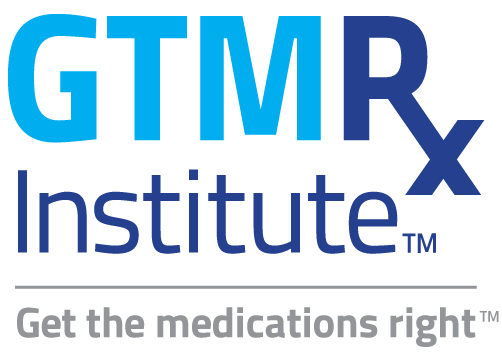 Health equity and CMM: You can’t have one without the other
Health equity and CMM: You can’t have one without the other
By Michael S. Barr, MD, MBA, MACP, FRCP, Executive Physician Advisor, GTMRx Institute
August 26, 2022
A key element of health equity is appropriate access to a high-quality health care team—a team whose members take the time to understand the needs, challenges and preferences of the individuals who entrust their care to them.
Clinical pharmacists, as members of the team, are the medication specialists. Through the process of comprehensive medication management (CMM), they get to know their patients’ individual needs related to medication. These aren’t just medical needs: They are social needs and risks as well as personal challenges and preferences. The clinical pharmacist then identifies opportunities to help optimize the benefits of all the medications—prescriptions as well as nonprescription (analgesics, alternative, vitamins and supplements, etc.)
Getting the data
To address social drivers of health and reduce health inequities, we must gather and use data to inform our actions. Clinical teams and their staff need to build trusting relationships with patients and families so they are willing to share their information.
The team needs to be trained how to ask about and document relevant details. EHR systems need to make it easy for staff and patients to enter data, and then facilitate the aggregation, analysis and reflection of that information in usable and actionable ways.
Health IT can facilitate bidirectional communication between the clinical pharmacist, prescriber and patient. Clinicians must have the tools to seamlessly communicate across the continuum of care. In many cases, however, the patient’s care team, including the pharmacist providing CMM are not co-located; they may not even share an EHR platform. We must enable bidirectional, secure health-related data exchange to promote optimal medication use.
Social determinants—or drivers—of health (SDOH) describe the personal and social environment of the patient, such as access to safe housing, healthful food, health care and transportation. These need to be documented. All these affect a person’s ability to understand and follow recommendations from a CMM consultation. For example, we wouldn’t prescribe medications requiring refrigeration for patients in an insecure housing situation. But unless the individual trusts the clinical team and the team is ready and able to collect and use the information, we wouldn’t know these important details that could influence our care plans
Clinical pharmacists play a critical role in this process. This is especially true for patients with complex conditions for whom management of multiple medications becomes a daily challenge. By systematically asking questions about preferences, experiences, challenges, risks and needs, clinical pharmacists can generate person-specific insights which are shared with the clinical team and guide optimization of medication regimens to produce better clinical outcomes, avoidance of harm and reductions of unwarranted variation in costs.
All of this is predicated on trust. It’s essential to cultivate relationships in which patients and families are willing to share this information. However, building that level of trust can be difficult, especially in historically marginalized communities.
Connecting to the community
Clinical pharmacists embedded in or connected to hospitals, health systems or ambulatory care practices may have access to information such as laboratory tests and clinical diagnoses, but they may not have an existing relationship with the patient.
Community pharmacists can be partners in the care of patients because of their interactions with people and unique perspective since they are proximate to peoples’ homes and may be more accessible. Therefore, collaboration—including appropriate information sharing—between community pharmacists and clinical pharmacists would be ideal from the patient and practice team perspective. Community pharmacies can, for example, connect patients to local resources to address social determinants of health.
Those local resources can be invaluable to the care team: By leveraging community health workers, social workers, care coordinators and other professionals on or adjacent to the team, physicians and pharmacists can build the trusting relationships that CMM requires. We know community-based connections are powerful. Sometimes, it’s the only way to build the rapport that leads to trust. (To learn about one such effort—a collaboration with the Alliance for Integrated Medication Management—listen to this recent Voices of Change podcast.)
Those connections won’t happen unless we create them. We need systems to help facilitate such cross-setting collaboration and a payment model that recognizes the value such integration of care and information would generate.
Fidelity and flexibility
The CMM process, supported by evidence, always remains consistent, but the pharmacist’s role may vary based on the setting—FQHC, small practice, multispecialty practice, hospital clinic, etc.
For example, in-person encounters may be challenging for a rural FQHC or urban clinic. Telehealth?—video or phone—encounters can replace or supplement what otherwise would be done in-person. The acuity in hospital settings may require more urgent reviews and adjustments to medication regimens than that which would be needed in ambulatory care.
It’s a matter of meeting patients where they are.
Such adjustments offer valuable opportunities to extrapolate from experiences in different settings to highlight best practices for dissemination and continuous improvement of care.
Health equity: Integrating CMM and SDOH
Ensuring CMM supports health equity isn’t aspirational. As a recent paper in the Journal of the American College of Clinical Pharmacy points out, it’s already happening. For example, many CMM programs modified their practice to integrate social drivers of health—especially as the pandemic exacerbated existing inequities.[1] We even have examples among our members.
To get the medications right, we must meet people where they are. To succeed, CMM must address the social drivers of health and illness. We’re on that path, but only together can we reach the destination of high quality, equitable health care.
[1.] Pastakia SD, Clark A, Lewis K, Taugher D. Expanding comprehensive medication management considerations to include responses to the social determinants of health within the BD Helping Build Healthy Communities Program. JACCP: Journal of The American College of Clinical Pharmacy. 2022;5(8):793-797. doi:10.1002/jac5.1679

